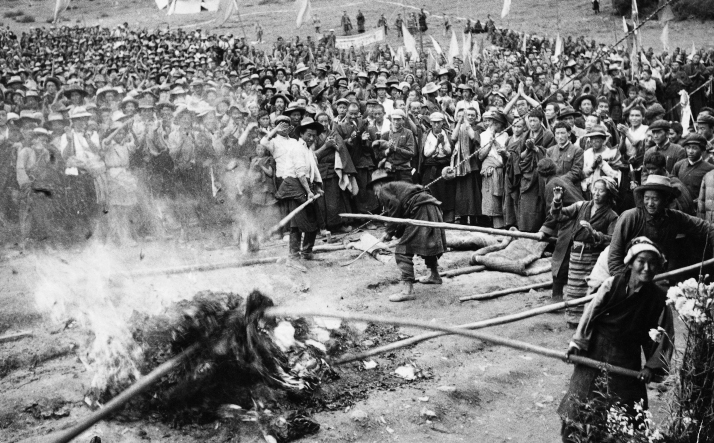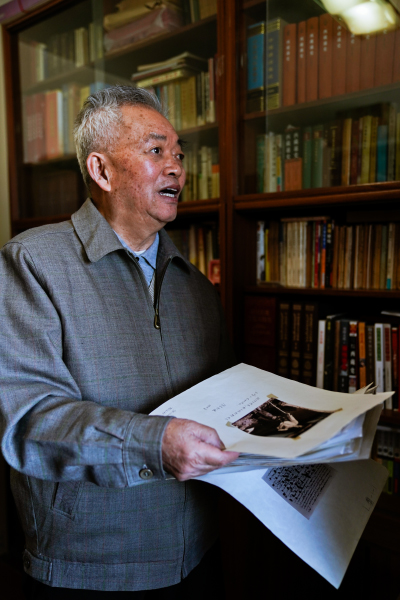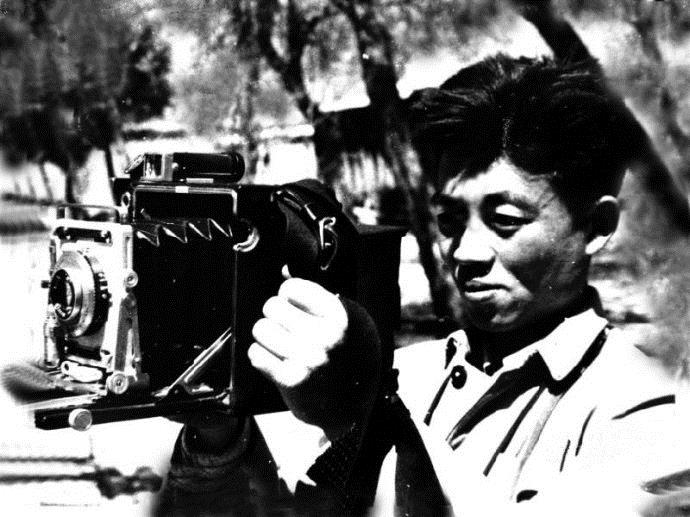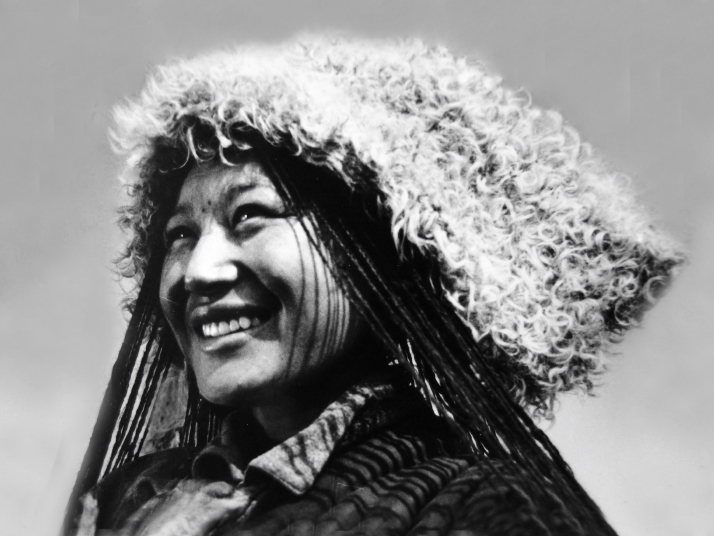|
||||||
|
||||||
| Home Nation World Business Opinion Lifestyle China Focus ChinAfrica Multimedia Columnists Documents Special Reports |
|
||||||
|
||||||
| Home Nation World Business Opinion Lifestyle China Focus ChinAfrica Multimedia Columnists Documents Special Reports |
| Nation |
| Time Keeper |
| Octogenarian photographer keeps record of sweeping changes in Tibet |
| By Li Fangfang · 2019-04-09 · Source: NO. 52 DECEMBER 28, 2017 |
 A photo by Chen Zonglie taken in Dagze County, southwest China's Tibet, on August 25, 1959, shows former serfs burning the contracts found in a manor that had bound them in servitude to feudal landlords (COURTESY OF CHEN ZONGLIE)
At the age of 87, Chen Zonglie, a retired photographer of Beijing Review, still has a vivid memory of the feudal past in Tibet in southwest China where people lived in inhuman conditions. He remembers the dirty bullpens where the serfs were herded for rest only at midnight and the scenes where children fought with wild dogs for scraps of food. The memories are from the period Chen worked with Tibet Daily as a photographer from 1956 to 1981. After retirement, he has been spending time sorting out those images and experiences. He wants to present to the outside world the lives on the remote and inaccessible plateau, especially after democratic reform in 1959 that ushered in sweeping changes in the region. "I took every opportunity to visit different areas in Tibet. I've been through earthquakes, mudslides, storms and avalanches," he told Beijing Review. "I do not have any photography style. I'm a photojournalist recording what I see." Chen donated more than 100 photographs taken in Tibet to the National Museum of China in 2009 and the museum held a photography exhibition for him. "I'm even busier after I retired," he said. Chinese cultural critic Zhai Fengjian puts Chen's work in perspective: "For photography related to Tibet, virtually no one can reproduce what Chen Zonglie has experienced. He was there witnessing the most turbulent period in Tibet's history, including the collapse of the 1,000-year feudal society propped by serfs."  Chen Zonglie, 87, shows the photos he shot in Tibet (ZHANG WEI)
Journey to the west Chen, who comes from Changzhou, a city in east China's Jiangsu Province, went to Beijing in his early 20s to study at the Beijing Film Academy. In the summer of 1956, there was a call from the Central Government for young professionals to work in Tibet and Chen, a fresh graduate, signed up. He was then reading novels on reform, such as Nobel laureate Mikhail Sholokhov's 1935 classic Virgin Soil Upturned on rural reform in the Soviet Union, and hoped to contribute to the work in Tibet. But he never anticipated a journey to the west that would last 25 years. As Chen discovered, Tibet before 1959 was not the Shangri-La that many imagine, but a medieval society where only the nobles and high-ranking monks and officials could own land or property. The remaining 95 percent were mostly serfs who suffered a miserable life. "People's life in Tibet really shocked me even though I had heard something about the conditions before I arrived," Chen said. "Tibet at that time was underdeveloped, outdated, and poor with complicated politics." He experienced a cultural shock when he arrived in Lhasa. "It was totally different from the inland areas in terms of the social situation and people's lives," Chen said. The first challenge was the language barrier. "They spoke Tibetan. I couldn't understand them at all." To explore local stories, he decided to learn Tibetan. "It was impossible for us to ask for help because no one knew Mandarin Chinese," he added. All employees of Tibet Daily were taught Tibetan every day. Chen picked up 2,000 words and simple grammar in two months. He also gradually figured out how to get along with Tibetans. The deputy editor in chief of Tibet Daily at that time, Kashod Toinzhubp, was from a noble family. His colleagues stood in awe of him and called him "young master of the family of Kashods." Chen felt it was inappropriate to call someone young master. So he addressed him as Mr. Kashod. Kashod was surprised that Chen could speak English. He was happy to be addressed as Mr. Kashod and said traditional titles that were outdated and redundant should be scrapped. "We are all colleagues here. I write articles and you take pictures," Kashod told Chen. The friendship opened the door to Tibetan nobles' life for Chen. He took photographs whenever he went with Kashod to big events, including religious activities and nobles' gatherings.  Chen Zonglie in 2019 and 1956 (COURTESY OF CHEN ZONGLIE)
Witness to opposites In the early 1950s, the ruling classes of Tibet owned all the land, including farmland, forests and grassland, as well as livestock and the serfs. Nobles, who made up less than 5 percent of the Tibetan population, lived in mansions and played cards to kill time. On the other side, the majority of Tibetans, who were serfs, owned nothing. Serfs had no rights and no freedom. "They were overworked to a degree I had never seen before," Chen recalled. One of his photographs shows a woman staggering under an immense load of wheat straw on her back during the autumn harvest. She was carrying it to the mansion of the lord she was tied to and was gasping for breath. "That was common for serfs during the autumn harvest. A whipping awaited those who were not able to do it," Chen said. The situation was worse for children. "It was normal to find little children fighting for food with wild dogs," he said. "Tibetans believe in Buddhism. So they shared zanba, roasted barley flour, with dogs at times, but not with people." Old serfs who weren't able to work were thrown out by the lords and were reduced to begging. "Of the 30,000 residents in Lhasa, there were more than 4,000 beggars. You can imagine what a decadent society it was," Chen said. "Chen vividly captured the emotions of the serfs in front of their owners, their fear, dependence and even loyalty," Zhai said. In his first three years in Tibet, Chen went to all areas except for Ngari Prefecture in the farwest. Cars were rare at that time and he usually rode a horse when he went out for interviews. He saw the landlords living in the lap of luxury and he also saw the serfs living in abject misery. He felt reform was needed.  A photo by Chen Zonglie taken in 1961 shows the daughter of a former house slave from the Womatingke Tribe in Nagqu County in Tibet. In old Tibet, from the age of 7, the girl herded sheep for her owner as unpaid labor. After democratic reform in 1959, her family was freed and given cattle, sheep and tents and switched to animal husbandry (COURTESY OF CHEN ZONGLIE)
Reform and rejoicing In March 1959 serfdom was abolished. The serfs were finally liberated. With that Chen's photography took a new turn. More and more of his photos showed people in high spirits, hoping for a better future. One of his most memorable photos, often published by the media, shows former serfs in Dagze, a county east of Lhasa, burning the contracts that had made them chattel of landlords, on August 25, 1959. The image shows the emancipated serfs singing in high spirits as the flames roar, devouring the paper. During democratic reform, the Central Government took several measures to rehabilitate the former serfs. Chen was impressed with a policy that said those who cultivated the land had the right to its produce. "This was the earliest measure that benefited the former serfs," he said. Gradually, every household was given livestock besides farmland. He remembers the delight of a young woman who received a cow and a calf. It was the first time that she owned something. "She said, 'Am I dreaming? I have never had milk before!'" Chen recalled. According to Zhai, there is a strong contrast between Chen's photographs before and after democratic reform. "The portraits taken later show more smiling faces," Zhai said. It reflected the emotions of people in Tibet in the 1950s as well, the critic said. Despite Tibet's remoteness and a social system and culture different from other places in China, people's expectations from the new government there and everywhere else were the same. "This is what Chen wants to show. With his photos as a reference, we can see a wide range of history, not only Tibet from the 1950s to the 60s, but also all of China in the 20th century," Zhai said. (Li Yifan contributed to this story) Copyedited by Sudeshna Sarkar Comments to ffli@bjreview.com |
About Us | Contact Us | Advertise with Us | Subscribe
|
||
| Copyright Beijing Review All rights reserved 京ICP备08005356号 京公网安备110102005860号 |